Introduction: The Silent Alcove Between Memory and Design
In many Indian homes, there exist small architectural recesses—wall niches or alcoves—carved into living rooms, hallways, or corridors. Often decorative, sometimes functional, they might hold a vase, a lamp, or a family idol.
But these alcoves often become emotional traps—quiet little places where memories, obligations, and unspoken expectations accumulate over generations. They silently embody our heritage, guilt, and desire for aesthetics.
In this post, we dive into the emotional layers hidden inside wall niches—discovering what they really hold beyond paint, plaster, and shadow.
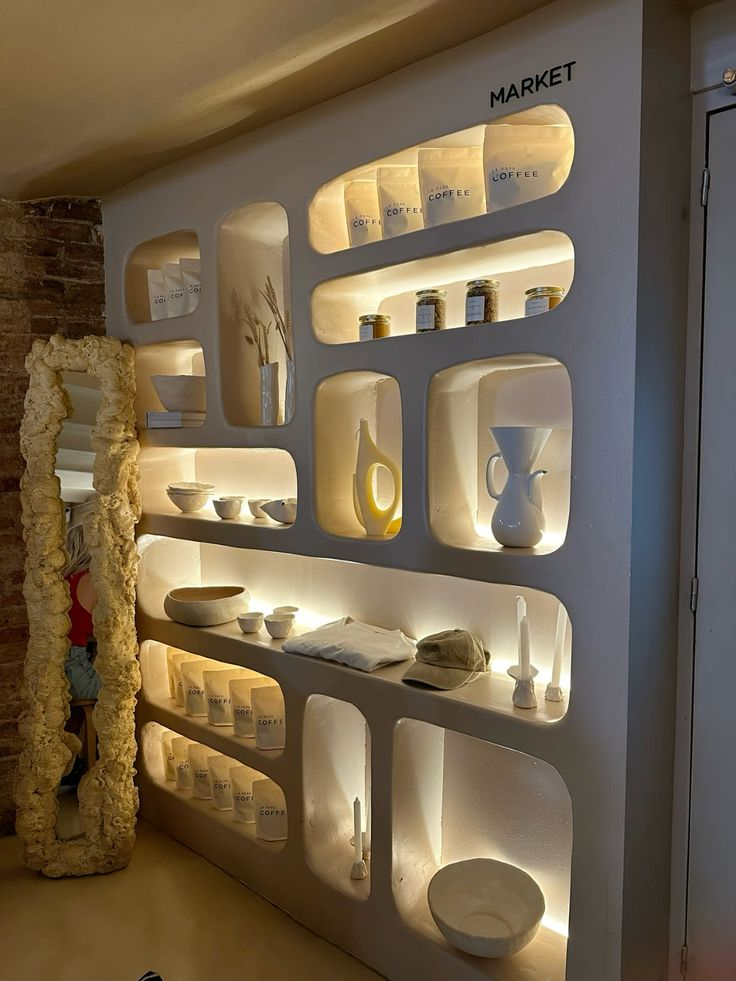
● 1. What Are Wall Niches in Indian Homes?
Wall niches—also known as alcoves or recessed walls—are:
- Built-in architectural features for display or storage
- Often framed with arches, mouldings, or tile backsplash
- Common near mandirs/pooja corners, hallway corners, and stair landings
- Used to display idols, family photos, decorative objects, or even forgotten keys
They were initially functional, but have slowly become embedded with symbolism and memory.
● 2. The Emotional Logic Behind Niches
Why do niches become emotional traps? Because they silently collect:
- Tradition: Idols, incense holders, or diya plates passed down generations
- Obligation: A mother’s cane photo frame that “should stay there”
- Memory: Portraits of grandparents or lost loved ones, untouched for decades
- Guilt: The niche “you never opened” but still dust it, daily
- Identity: The aesthetic of a grandparent’s home carried forward
These small spaces carry outsized psychological weight—more than simply architectural intent.
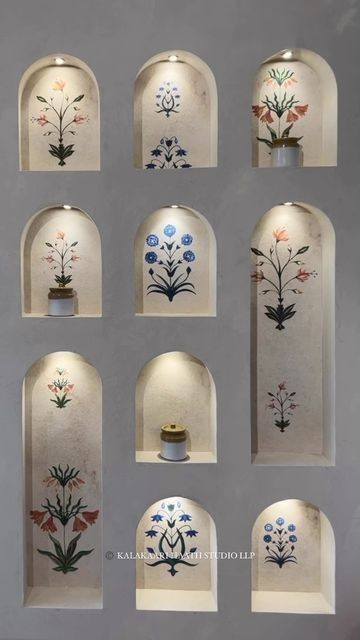
● 3. Origin Story: Why Niches Became Emotional Containers
Historically in India:
- Homes had built‑in alcoves for deity worship in open joints
- Havelis used niches to display family shields, ornaments, ancestral portraits
- Cushioned seating alcoves shaped small conversations in courtyards
- Later, middle‑class homes mimicked these as aesthetic nods
Over time, nostalgia overtook function, and niches became curated memory capsules.
● 4. The Design‑Memory Loop
The typical emotional/niche lifecycle:
- A niche is created—often with purpose: display deity, photo, lamp
- It becomes a daily ritual corner—lighting incense or dusting antique idol
- The object inside becomes untouchable—“Please don’t move it.”
- Through generations, new objects added, but old ones stay
- Even as design evolves, the niche remains sacred and unchanged
Niches thus become static time machines—trapping not only memories but also being resistant to change.
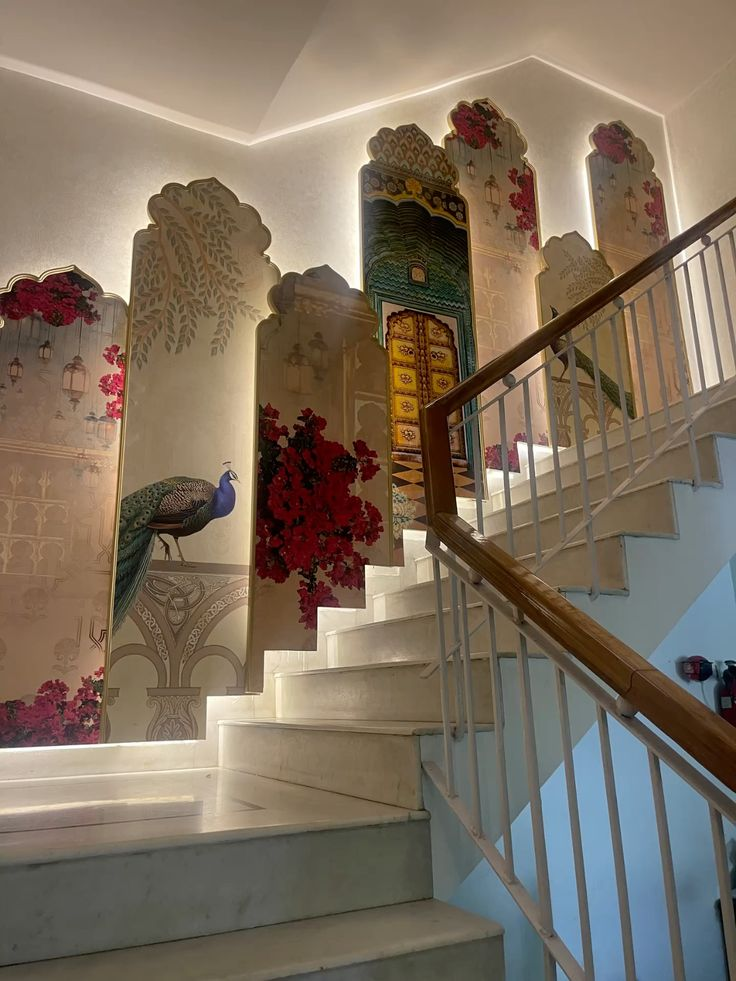
● 5. Common Niches You Never Question
Walk through most Indian interiors, and you’ll see:
- Pooja alcove near entrance or living room, often carved into wall
- Photo ledges with dusty frames in corridors or stairwells
- Mini display niches holding brass vases or decorative lamps
- Kitchen niches for spices or jars—some decades old
- Hallway niches that are now empty but still architecturally sacred
These are subtle emotional milestones—quiet, ignored, yet refusing erasure.
● 6. Why We Don’t Let Them Change
Even when renovating:
- We instinctively preserve the niche—“It’s part of the house’s soul.”
- We hesitate to repaint, relocate, or even empty it
- We feel empathic guilt—“But Amma said it must always stay there.”
- A new design might fear touching it—“Visitors might ask why we removed it.”
That hesitation is emotional architecture in action.
● 7. The Emotional Traps They Represent
These alcoves often embody deeper emotional patterns:
- Inertia: We don’t redesign the space because that wedge has been “ours”
- Obsession with legacy: Isolating family history in one untouched corner
- Unspoken hierarchy: The niche becomes more important than other living areas
- Continuity guilt: Fear that removing or changing it dishonors memory
These emotional traps limit how freely we inhabit our own homes.
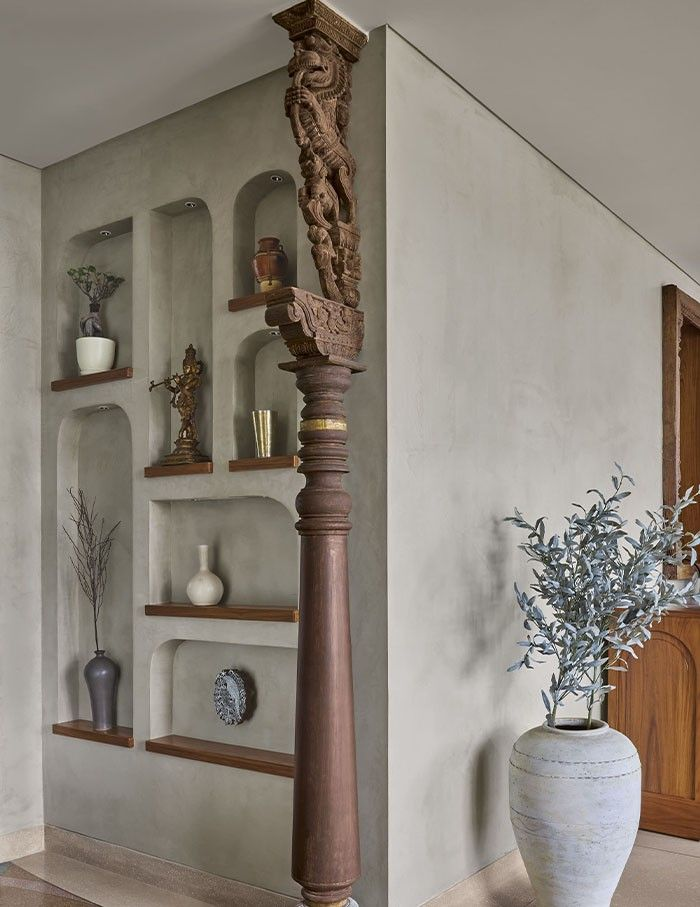
● 8. Repurposing Niches Without Losing Memory
We can honor tradition—without being stuck in it:
- Photograph the existing interior, archive the niche digitally
- If the idol or photo must stay, reframe it in a portable way
- Use curated lighting—a soft spotlight instead of an idol
- Transform from décor point to functional utility—small planters, spice racks, reading lamp hold
- Encourage rotation—move displayed objects seasonally or annually
This approach lets you preserve with intention, not inertia.
● 9. Architectural Alternatives to Niches
Designers have alternatives:
- Custom wall furniture that can evolve—recessed today, shelf tomorrow
- Mobile installations like sofa-side lamps instead of fixed alcoves
- Floating frames or art hangers instead of carved niches
- Architectural shadow lines in place of permanent recesses
You don’t lose memory—you just honor it differently.
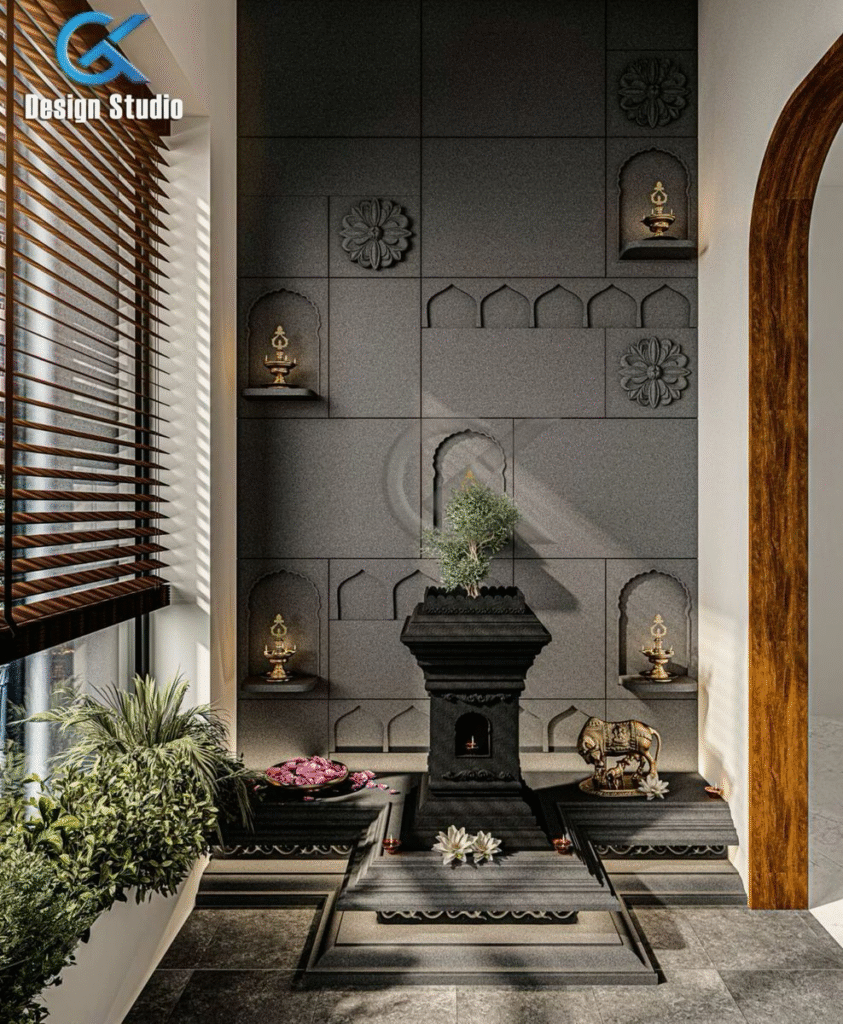
● 10. A Family Story: The Abandoned Pooja Niche
One client’s ancestral home had a Pooja niche in the central hall, untouched for 40 years. During renovation, the family wanted modern open plan living.
They worried:
“But if we remove that niche, will it hurt Amma’s heart?”
Instead of preserving it, we redesigned the niche into a freestanding glass altar. It could be:
- Removed when needed
- Replaced at a new home
- Viewed in full light
They kept the idol and lamp—because those belonged to their lineage—but freed the niche from emotional inertia.
● 11. Emotional Liberation Through Design
Rethinking niches can be a powerful act of emotional liberation:
- Restructure memory into portable, flexible formats
- Tell your story—not your predecessor’s—with confidence
- Reclaim space that has been “frozen” in time
- Let your home evolve, rather than remain a static museum
This is design with empathy—not just aesthetics.
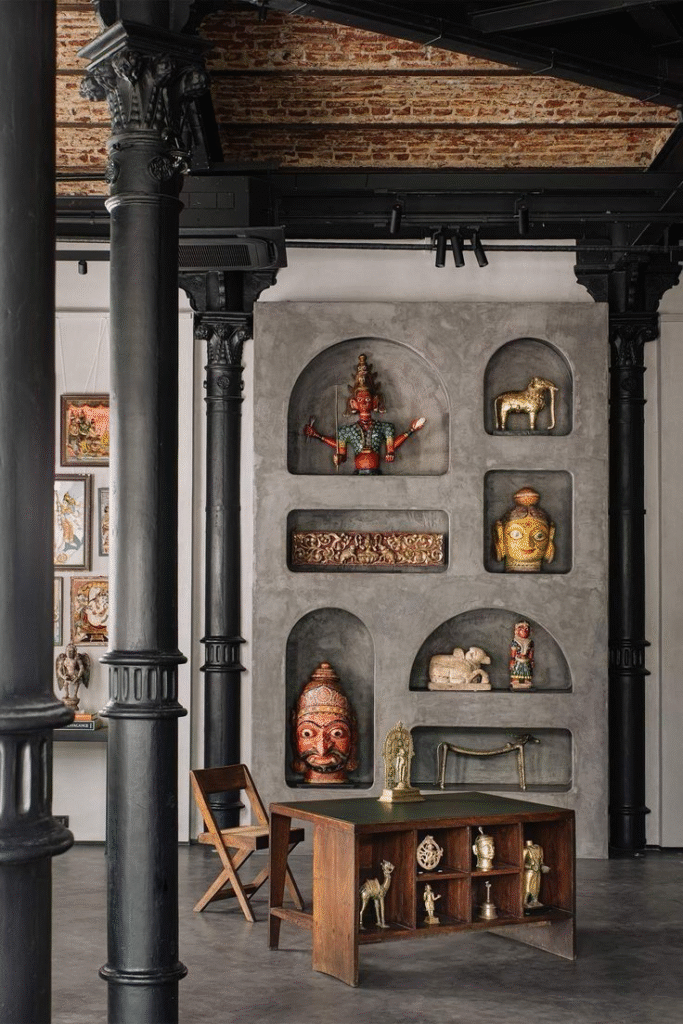
● 12. When to Keep a Niche (and When to Let It Go)
Keep it if:
- It’s integral to household ritual
- Changing it would disrupt heritage
- You’re emotionally tied—but can actively engage
- You can maintain it consciously
Let it go if:
- It’s preserved for guilt or habit alone
- You resent the way space is held hostage
- It blocks better design flow
- It stops you from updating the space
Keep memory—as a story, not as an obligation.
● 13. Designers: Become Memory Curators
Architects can lead this transformation by:
- Asking why the niche matters, not just “should we keep it?”
- Suggesting archives, not only restorations
- Offering flexible architectural elements instead of permanence
- Designing memory walls, where objects can rotate
- Creating ritual installation ceremonies for objects being removed
We don’t just build walls. We build emotional futures.
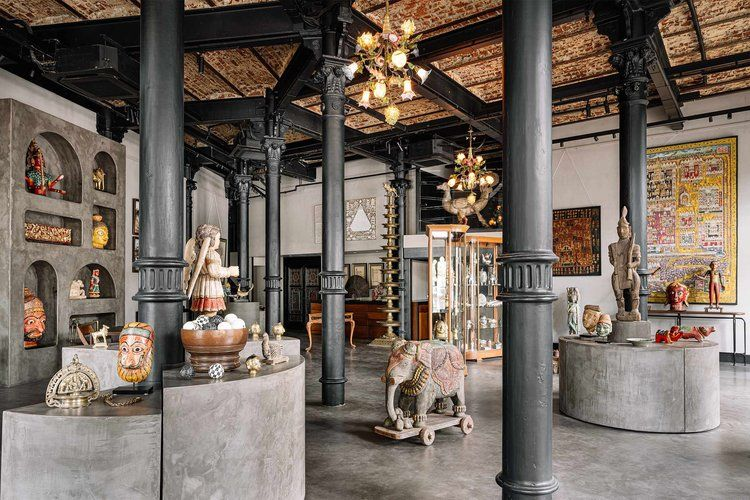
● 14. Broader Takeaway: Spaces Trap Us Unless We Choose Them
If niches hold emotional traps, what else does our architecture hold?
- Invisible guilt behind corridors untouched
- Inherited layouts that exclude us
- Silent voids that no one visits anymore
But architecture is also a tool for freedom—if we use it with awareness and empathy.
Conclusion: What Does Your Alcove Hold?
Your wall niche isn’t just a decorative dent—it’s a deep container.
It might hold:
- A worship ritual
- A fragment of family legacy
- Unresolved grief
- Identity still tied to a room
Or, it could hold your own evolving story—if you choose to change it.
Rather than ask,
“What was here 40 years ago?”
Ask instead,
“What do I want here, today?”
Design That Honors Memory — Without Being Trapped by It
Looking to renovate respectfully, while letting your home breathe?
I specialize in:
- Emotional-architecture renovation
- Memory-preserving design with modern adaptability
- Heritage-to-modern transitions that feel thoughtful
- Pan-India architectural services from Ambala, Haryana
📩 Email: contact@mishulgupta.com
📍 Servicing clients across India
